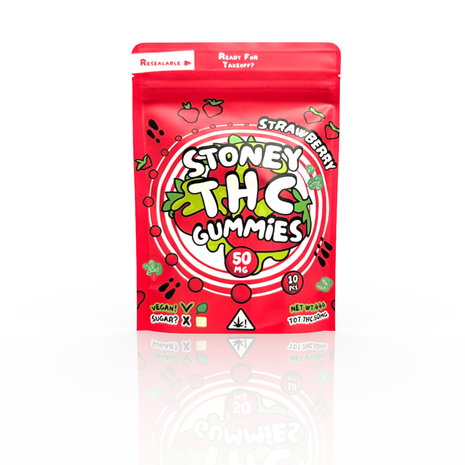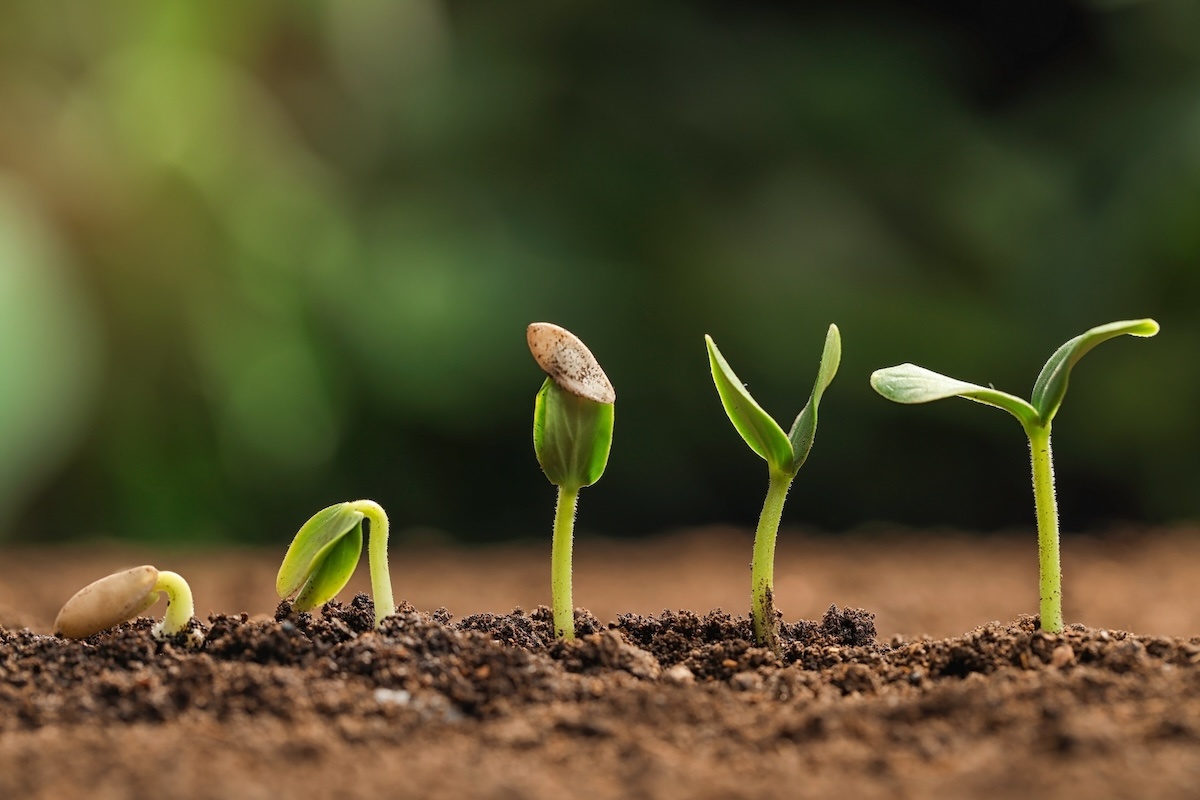Effects of Cannabis and THC: Everything You Need to Know
Cannabis has been used for centuries for both medicinal and recreational purposes. The most important psychoactive substance in it is THC, known for its diverse effects on the body and mind. But how exactly does THC work, what are its positive and negative effects, and what long-term consequences can consumption have? In this article, you'll learn everything important about THC and its effects.

THC Products
Discover our selection of high-quality THC products for various applications.
Discover nowWhat is THC?
THC (Tetrahydrocannabinol) is the primary psychoactive substance in cannabis. It affects the brain by binding to cannabinoid receptors and influencing the endocannabinoid system. This leads to various effects, from euphoria to potential side effects such as anxiety or paranoia. The effects of THC depend on several factors, including dosage, consumption method, and individual tolerance.
How Does THC Affect the Body?
THC exerts its effects by influencing the central nervous system. The effects can vary depending on the amount taken, consumption method, and individual tolerance.
Positive Effects
Euphoria: A feeling of relaxation and well-being.
Altered perception: Colors and music may appear more intense.
Increased appetite: Known as the "munchies effect."
Enhanced creativity: Some users report increased creativity and new thought patterns.
Pain relief: THC may help reduce chronic pain.
Muscle relaxation: Can alleviate muscle spasms and tension.
Negative Effects
Short-term memory impairment: Difficulty remembering recent events.
Increased heart rate: May pose risks for heart patients.
Possible sedation: Higher doses can have a sedative effect.
Reduced motor control: Impairs coordination and reaction time.
Anxiety and paranoia: High doses or an unsuitable environment can trigger unpleasant psychological reactions.
Potential for dependency: Long-term use can lead to psychological dependence.
Mechanism of THC Action in the Brain
THC interacts with the CB1 and CB2 receptors of the endocannabinoid system. These receptors are distributed throughout the body, particularly in the brain, where CB1 receptors play a key role. By activating these receptors, THC influences neurotransmitters such as dopamine and serotonin, explaining its euphoric and relaxing effects. However, overstimulation of these receptors can also lead to anxiety or paranoid thoughts.
Pharmacology of Cannabis
The effects of cannabis on the body can vary greatly depending on its composition and consumption method. A key factor is the interaction of cannabinoids with the endocannabinoid system (ECS), which plays a central role in regulating mood, appetite, pain perception, and memory.
Role of Cannabinoids in the Endocannabinoid System
The ECS consists of CB1 and CB2 receptors, which are found throughout the body. While CB1 receptors are mainly located in the brain and are responsible for the psychoactive effects of THC, CB2 receptors are primarily found in the immune and peripheral nervous systems. The main cannabinoids and their roles are:
THC: Strongly binds to CB1 receptors, causing psychoactive effects.
CBD (Cannabidiol): Has no psychoactive effect and can modulate THC effects by influencing its binding to CB1 receptors.
CBN (Cannabinol): Results from the degradation of THC and has mild sedative effects.
Factors Influencing the Effects of Cannabis
The individual effects of THC can be influenced by various external factors:
Mood and environment: A relaxed environment can enhance positive effects, while stress or anxiety may trigger negative reactions.
Polydrug use: Combining cannabis with alcohol or other substances can amplify effects or cause unpredictable side effects.
THC and CBD content: Products with higher THC levels have stronger psychoactive effects, whereas high CBD levels can have a calming effect.
Genetics and tolerance: Regular users develop a higher tolerance to THC, requiring higher doses to achieve the same effect.
Variability in THC Content and Other Ingredients
Cannabis contains not only THC and CBD but also many other cannabinoids and terpenes that influence the overall effect. Key factors include:
Strains: Different cannabis strains have varying THC and CBD levels, leading to different effects.
Growing and processing methods: Environmental conditions, fertilizers, and extraction methods can significantly affect THC content.
Consumption method: Smoking leads to faster effects than edibles, which act more slowly but more intensely.
Different Consumption Methods and Their Effects
THC can be consumed in various ways, affecting its onset and duration:
Smoking (joint, bong, pipe): Effects set in quickly (within minutes) but last only a few hours.
Vaporizing (THC liquid or cannabis flowers): A gentler alternative to smoking with similar rapid effects.
Edibles (THC gummies, brownies, THC edibles): Effects are delayed (30-90 minutes) but last longer.
Tinctures and oils: Taken under the tongue, providing a moderate duration of effects.
Creams and ointments: Mainly for medical purposes, acting locally without psychoactive effects.

Medical Use of Cannabis
THC is used in medicine to treat various conditions, including:
Pain relief: Especially for chronic pain, rheumatism, and multiple sclerosis.
Appetite stimulation: Used for cancer patients and people with eating disorders.
Anti-nausea: Helps against nausea and vomiting, especially during chemotherapy.
Neuroprotection: Possible application for neurological diseases such as Parkinson's.
Differences Between Sativa, Indica, and Hybrid
Cannabis can be broadly divided into three main types: Sativa, Indica, and Hybrid. Each of these types has different characteristics and effects:
Sativa
Effects: Sativa strains are known for their energizing and mood-enhancing effects. They promote creativity, concentration, and social interaction.
Usage: Daytime use, creative activities, productive work.
Characteristics: Long, narrow leaves, tall plants, usually with a higher THC content.
Indica
Effects: Indica strains have a calming and relaxing effect. They are ideal for stress reduction and sleep support.
Usage: Evening use, pain relief, sleep support.
Characteristics: Broad leaves, bushy and smaller plants, often with a higher CBD content.
Hybrid
Effects: Hybrid strains combine characteristics of both Sativa and Indica. The exact effects depend on the specific genetic mix.
Usage: Customizable based on individual needs (e.g., balanced effects for all-day use or targeted medical applications).
Characteristics: A mix of Sativa and Indica traits, varying THC and CBD levels.
Which Products Contain 0.2% THC?
CBD Oils: Used for relaxation, pain relief, and sleep support.
THC Gummies with <0.2% THC: Provide a legal, non-psychoactive way to consume cannabinoids.
Hemp Gummies: Contain a combination of CBD and small amounts of THC.
THC Shots 0.2% THC: Offer a convenient way to consume THC in low doses without strong psychoactive effects.
These products undergo strict quality control and provide a legal alternative for people who want to benefit from the positive properties of cannabinoids without legal consequences.
Long-Term Effects of Cannabis Use
Long-term THC consumption can have both physical and psychological effects:
Psychological Effects
Mental health: Long-term use has been linked to depression, anxiety disorders, and psychotic conditions.
Dependency: Regular THC consumption can lead to psychological dependence.
Altered brain structure: Studies show that prolonged cannabis use can impair cognitive abilities, especially memory.
Physical Effects
Lung issues: Smoking cannabis can strain the lungs and lead to respiratory diseases.
Cardiovascular problems: THC can increase heart rate, raising the risk of heart-related issues.
Hormonal effects: Long-term use may impact the hormonal system, potentially reducing fertility.
Social Consequences
Decline in academic and work performance: Persistent use can impair concentration and working memory.
Impact on relationships: Social bonds may suffer from chronic use.
Molecular Structure of THC
THC has the chemical formula C21H30O2 and is a (–)-trans-isomer. It belongs to the cannabinoid family, which also includes CBD (Cannabidiol) and CBN (Cannabinol). Its structure influences its psychoactive properties.

HHC vs. THC – What Are the Differences?
HHC (Hexahydrocannabinol) is a lesser-known cannabinoid that may have similar effects to THC. However, users report that HHC is milder and has a lower psychoactive impact. Learn more in our detailed HHC vs. THC Blog.
Buying THC – Is It Legal?
Purchasing and possessing THC is mostly illegal. However, medical cannabis is available under certain conditions. Products containing less than 0.2% THC, such as some gummies and shots, are legally available in most countries. Always check the regulations in your country.
Conclusion
THC has a strong effect on the human body, with both positive and negative aspects. Those who choose to consume THC should be aware of the potential risks and legal regulations. Particularly with long-term use, it is important to consider possible psychological and physical side effects. Nevertheless, THC offers various medical applications and can provide relief for patients with specific conditions.








